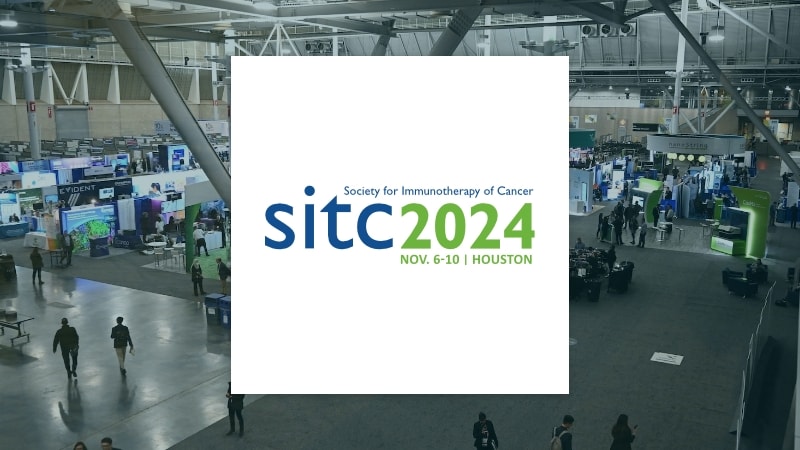Lung Cancer Care
When you're a patient at Providence, we don't just treat your lung cancer – we treat you. We use the most advanced treatments to create a highly personalized care plan. We also support you and your loved ones with a full range of services throughout your entire cancer journey. The result is effective, whole-person care for your body, mind and spirit.
Why Choose Us for Lung Cancer Care?
At Providence, we see the life in you. Together, let’s finish cancer – so you don’t have to miss any of life’s special moments.
About Lung Cancer
Lung cancer is a type of thoracic cancer that begins in the lungs. It is often caused by exposure to tobacco, though there are rising numbers of patients being diagnosed with lung cancer who have never smoked or been exposed to secondhand smoke. The expert oncology teams at Providence use the most effective therapies to treat every type of lung cancer, including:
- Non-small cell lung cancer
- Small cell lung cancer
Testing and Diagnostics

Diagnostic tools help our cancer clinicians determine which therapies will work best for each patient, based on many factors such as cancer type and the genetic or molecular profile of the tumor. Your doctors will use multiple advanced diagnostic and prognostic tools to help design your individualized treatment plan. Depending on your case, this may include one or more of the following:
- Gene expression assay
- Genomic tumor profiling (ALK, BRAF, EGFR, MET, NTRK 1/2/3, KRAS, RET, ROS)
- MRI (magnetic resonance imaging)
- PET/CT scan
Personalized Treatment for Lung Cancer
We take a team approach to your lung cancer treatment because we know this offers the best success in controlling and curing cancer. Your multidisciplinary cancer care team will work with you to design an individualized cancer care plan – from diagnosis to post-treatment support. We offer many different therapies across our Providence locations. Depending on your condition, your personal care plan may include one or more of the following:
Systemic therapies travel through the bloodstream and affect cells in other body parts. They are used for patients whose cancer has spread to other areas of the body or if there’s a high risk of spread. Sophisticated genetic analysis allows us to target therapies to specific DNA mutations that cause cancer cells to develop and grow. Systemic therapies include:
Chemotherapy is the systemic use of cytotoxic chemicals to kill cancer cells. Today there are many medications (e.g., biological medications, immune treatments, targeted therapies) that do not fit the classic definition of chemotherapy yet are often included in this category.
Clinical trials represent research protocols that include the use of new drugs or drug combinations in a specific clinical situation.
Immunotherapy uses drugs to allow the body’s own immune system to more effectively find and destroy cancer cells.
Molecularly targeted therapy is the use of drugs that are molecularly targeted at a genetic mutation that has allowed the cancer to grow. This therapy enables personalized treatments for patients who carry certain genetic mutations or abnormalities.
Surgical therapies involve an operation or procedure to remove cancer from the body. Surgery may be the main treatment for some invasive cancers, but it’s only one part of the entire treatment plan. Surgical therapies include:
Lung lobectomy is the surgical removal of one of the five lobes of a lung. It can be performed with a traditional thoracotomy, or with a less invasive treatment option called video-assisted thoracic surgery (VATS).
Open lung wedge resection is a surgical procedure involving the removal of a tumor from the lung through a large incision in the chest, during which the ribs are spread apart.
Pleuroscopy is a procedure in which a small video camera called an endoscope is inserted through the ribs into a space between the lungs and chest wall. This procedure may be performed to obtain biopsies or drain fluid from the lungs.
Video camera-assisted surgery allows for better and more controlled access, giving the surgeon a clear and magnified view of the surgical area. It allows them to use smaller instruments and move with greater precision in a minimally invasive fashion, all of which results in a less traumatic experience and quicker recovery for the patient.
This advanced procedure requires a sophisticated facility and equipment, along with highly specialized physicians. It is available at some Providence locations.
Pneumonectomy is a surgical procedure to remove an entire lung.
Segmentectomy is a surgical procedure to remove a part of an organ, such as a lung, liver or breast, that contains a tumor.
Sleeve lobectomy is a surgical procedure to remove a lung tumor while saving that part of the lung. It involves removing the cancer growth and part of the main bronchus (the airway), then rejoining the ends of the bronchus and the lung.
Staging endobronchial ultrasound (EBUS) is a procedure in which a small video camera fitted with a special probe is inserted into the airway. In addition to directly seeing the structures, the physician uses sound waves (ultrasound) to enhance the images of the lymph nodes and surrounding tissues.
EBUS can often allow biopsies to be performed safely without visualization. This advanced procedure requires a sophisticated facility and equipment, along with highly specialized physicians. It is available at some Providence locations.
Video-mediastinoscopy is a minimally invasive procedure to inspect the area behind the breastbone known as the mediastinum. A surgeon guides a mediastinoscope — a flexible, narrow tube with a small video camera on the end — through a small incision just above the breastbone.
Robotic wedge resection is a procedure in which a wedge-shaped section of diseased or damaged lung tissue is removed with robotic assistance.
Robotic-assisted surgery allows for better and more controlled access, giving the surgeon a clear and magnified view of the surgical area. It allows them to use smaller instruments and move with greater precision in a minimally invasive fashion, all of which results in a less traumatic experience and quicker recovery for the patient.
This advanced procedure requires a sophisticated facility and equipment, along with highly specialized physicians. It is available at some Providence locations.
Wedge resection using video-assisted thoracoscopic surgery (VATS) is a procedure in which a wedge-shaped section of diseased or damaged lung tissue is removed with video-camera assistance.
Video-assisted surgery extends the capabilities of the surgeon's eyes and hands, giving them a clear and magnified view of the surgical area. It allows them to use smaller instruments and move with greater precision in a minimally invasive fashion, all of which results in a less traumatic experience and quicker recovery for the patient.
This advanced procedure requires a sophisticated facility and equipment, along with highly specialized physicians. It is available at some Providence locations.
Radiation therapy uses high-energy radiation from a source like X-rays or photons to kill cancer cells or shrink tumors. It may be part of a treatment plan that also includes systemic therapies and/or surgery. Radiation is sometimes used to help ease a patient’s pain or discomfort. Radiation therapies include:
Brachytherapy is an approach to delivering radiation treatment from a source implanted inside the body. These sources may be placed either permanently or temporarily at the tumor site.
By delivering radiation directly into a tumor, this technique spares the surrounding normal tissue any exposure to radiation and the side effects that it may bring.
This advanced procedure requires a sophisticated facility and equipment, along with highly specialized physicians and support. It is available at some Providence locations.
Intensity-modulated radiation therapy (IMRT) and volumetric-modulated arc therapy (VMAT) are advanced types of radiation therapies. IMRT uses advanced technology to manipulate the radiation beams to conform to the shape of a tumor. VMAT is a subtype of IMRT in which the machine actively delivers radiation beams while moving in an arc around the patient.
This method of radiation delivery offers next-generation capabilities. The arc-based therapy provided via VMAT delivers high doses of radiation to more focused areas, reducing side effects and the overall treatment time for the patient. This treatment is particularly effective at treating several types of cancer while at the same time reducing toxicity and harm to vital organs.
This procedure is one of several new ways to deliver radiation therapy. It requires a sophisticated facility and equipment, along with highly specialized physicians. It is available at some Providence locations.
Radiopharmaceuticals (Y-90) is a group of treatments delivered by a catheter and consisting of millions of microscopic, radioactive microspheres that are infused into the arteries that feed the tumor. Y-90 microspheres are delivered into the arteries and can be used to treat cancer that has spread, or metastasized, to the liver. These particles become embedded into the cancer cells and deliver the radiation directly to the cancer site. Two commonly used agents are Theraspheres and Sir Spheres.
The advantage of this treatment is that the radiation penetrates only a short distance, so the risk to the organ is very low while the dose the cancer experiences is very high.
This procedure is one of several new ways to deliver radiation therapy directly into the tumor site. It requires a sophisticated facility and equipment, along with highly specialized physicians. It is available at some Providence locations.
Stereotactic radiation (SABR/SBRT) is a group of treatments that includes stereotactic body radiation therapy (SBRT) and stereotactic ablative radiation (SABR) – both of which are adaptations of stereotactic radiosurgery (SRS) – for the treatment of targets in the body, but outside the brain. Similar to SRS, these techniques deliver very high doses of radiation using sophisticated motion management and patient immobilization techniques.
The number of radiation treatments is minimal and may range from one to five treatments delivered over one to two weeks.
This procedure is one of several new ways to deliver radiation therapy. It requires a sophisticated facility and equipment, along with highly specialized physicians. It is available at some Providence locations.
Surface-guided radiation therapy (SGRT/SIGRT) is an approach to radiation targeting that offers real-time beam guidance from face and body surface-recognition systems.
This treatment is particularly effective at treating several types of cancer while at the same time reducing toxicity and harm to vital organs, thus minimizing side effects.
This advanced procedure requires a sophisticated facility and equipment, along with highly specialized physicians. It is available at some Providence locations.
Three-dimensional conformal radiation therapy (3DCRT) is a radiation planning and treatment technique in which three-dimensional (3D) imaging enables improved targeting for radiation treatment. 3D planning with CT imaging makes radiation treatment much more conformal, or tailored to the target.
Find Lung Cancer Care Close to You
Accreditations
We are proud to see our dedication to our cancer patients recognized by some of the most well-respected programs and institutions in the United States. Several of our Providence locations have achieved the following accreditations:
- Accountable Care Organizations (ACO) Accreditation – National Committee for Quality Assurance (NCQA)
- American College of Radiology (ACR) Accreditation
- Accreditation Program for Excellence (APEx) – American Society of Radiation Oncology (ASTRO)
- Commission on Cancer (CoC) Accreditation – American College of Surgeons (ACS)
- Integrated Network Cancer Program (INCP) – American College of Surgeons (ACS)
- Quality Oncology Practice Initiative (QOPI) Certification – American Society of Clinical Oncology (ASCO)
Meet the Team
At Providence, you'll have access to a vast network of dedicated and compassionate providers who offer personalized care by focusing on treatment, prevention and health education.

Find Clinical Trials
Are you looking for a clinical trial for yourself or for a patient? We’d love to help you find one!
Find Care
Expert Tips and Advice for Cancer





